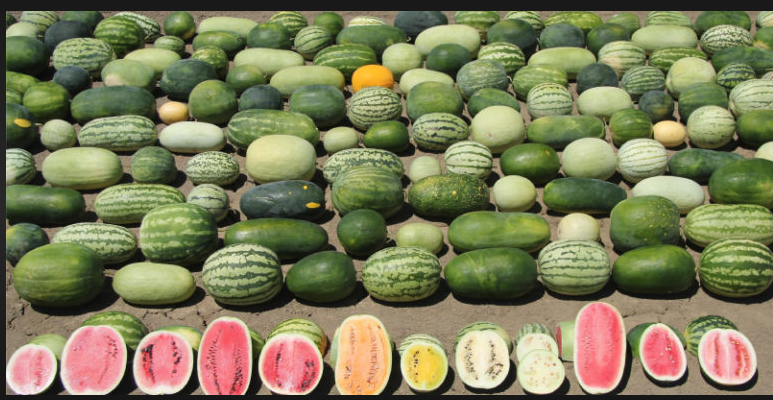Decoding Watermelon Weight: How Many Pounds is a Watermelon?
Watermelon, with its juicy and refreshing flesh, is a favorite summer treat enjoyed by many. Whether you're planning a picnic, a barbecue, or just a casual snack, understanding the weight of a watermelon is essential for portioning and preparation. In this article, we'll explore the topic of watermelon weight, answering the common question: How many pounds is a watermelon?

Nutritional facts per 100g
1. Introducing the Beloved Watermelon
Before we dive into the specifics, let's introduce the watermelon itself.
This fruit, known scientifically as Citrullus lanatus, belongs to the gourd family and is cultivated for its sweet and hydrating flesh.
Watermelons are characterized by their green rind, often with darker stripes or spots, and their vibrant red or pink interior filled with seeds or seedless.
2. Varieties and Sizes of Watermelons
Watermelons come in various varieties, and their sizes can vary significantly.
Some common watermelon varieties include seedless, seeded, mini, and yellow-fleshed watermelons.
The size of a watermelon can range from small, individual servings to large fruits suitable for sharing among a group.
3. The Weight of Watermelons: Small to Large
The weight of a watermelon depends on its size, variety, and degree of ripeness. Here's an overview of the weight range for different types of watermelons:
-
Mini Watermelons: Mini watermelons, also known as personal watermelons, typically weigh around 5 to 10 pounds (2.3 to 4.5 kilograms). These smaller watermelons are a convenient option for individuals or small gatherings.
-
-
Standard Watermelons: Standard-sized watermelons, which are commonly found in grocery stores, can weigh anywhere from 15 to 45 pounds (6.8 to 20.4 kilograms). The weight variation within this range is due to factors such as the variety of the watermelon and its water content.
-
-
Large Watermelons: In some cases, watermelons can grow even larger, exceeding 45 pounds. These hefty watermelons are often used for events, competitions, or creative displays.
-
-
Seedless Watermelons: Seedless watermelons, known for their convenience, fall within the weight range of standard watermelons. The absence of seeds doesn't significantly impact the overall weight.
-
-
Yellow-Fleshed Watermelons: Watermelons with yellow or orange flesh have a similar weight range to their red-fleshed counterparts. The color of the flesh doesn't significantly affect the weight of the fruit.
4. Selecting the Perfect Watermelon
When choosing a watermelon, its weight is just one factor to consider. Here are some tips for selecting a ripe and delicious watermelon:
-
Look for Uniform Shape: A watermelon should have a symmetrical shape without any irregular bumps or indentations.
-
-
Check the Field Spot: The field spot is the area where the watermelon rested on the ground while growing. A creamy or yellowish spot indicates ripeness.
-
-
Inspect the Rind: The rind should have a dull finish rather than a shiny appearance. A matte finish suggests that the watermelon is ripe.
-
-
Tapping Test: Gently tapping the watermelon can give you an idea of its ripeness. A deep, hollow sound indicates that it's likely ripe.
5. Weighing Your Watermelon
If you're curious about the weight of a specific watermelon, here's a simple method to determine its weight:
-
Use a kitchen scale: Place the watermelon on a kitchen scale and record its weight in pounds or kilograms.
-
-
Estimate weight based on size: If a scale isn't available, you can estimate the weight based on the watermelon's size and variety. Keep in mind that this method provides a rough estimate.

Watermelon
The weight of a watermelon varies based on its size, variety, and ripeness. Mini watermelons are typically around 5 to 10 pounds, while standard-sized watermelons can range from 15 to 45 pounds. Larger watermelons exceeding 45 pounds are also found, often used for special occasions. When selecting a watermelon, factors such as shape, field spot, rind, and sound can indicate its ripeness. As you enjoy this iconic summer fruit, understanding its weight range can help you plan delicious servings for yourself and your loved ones.